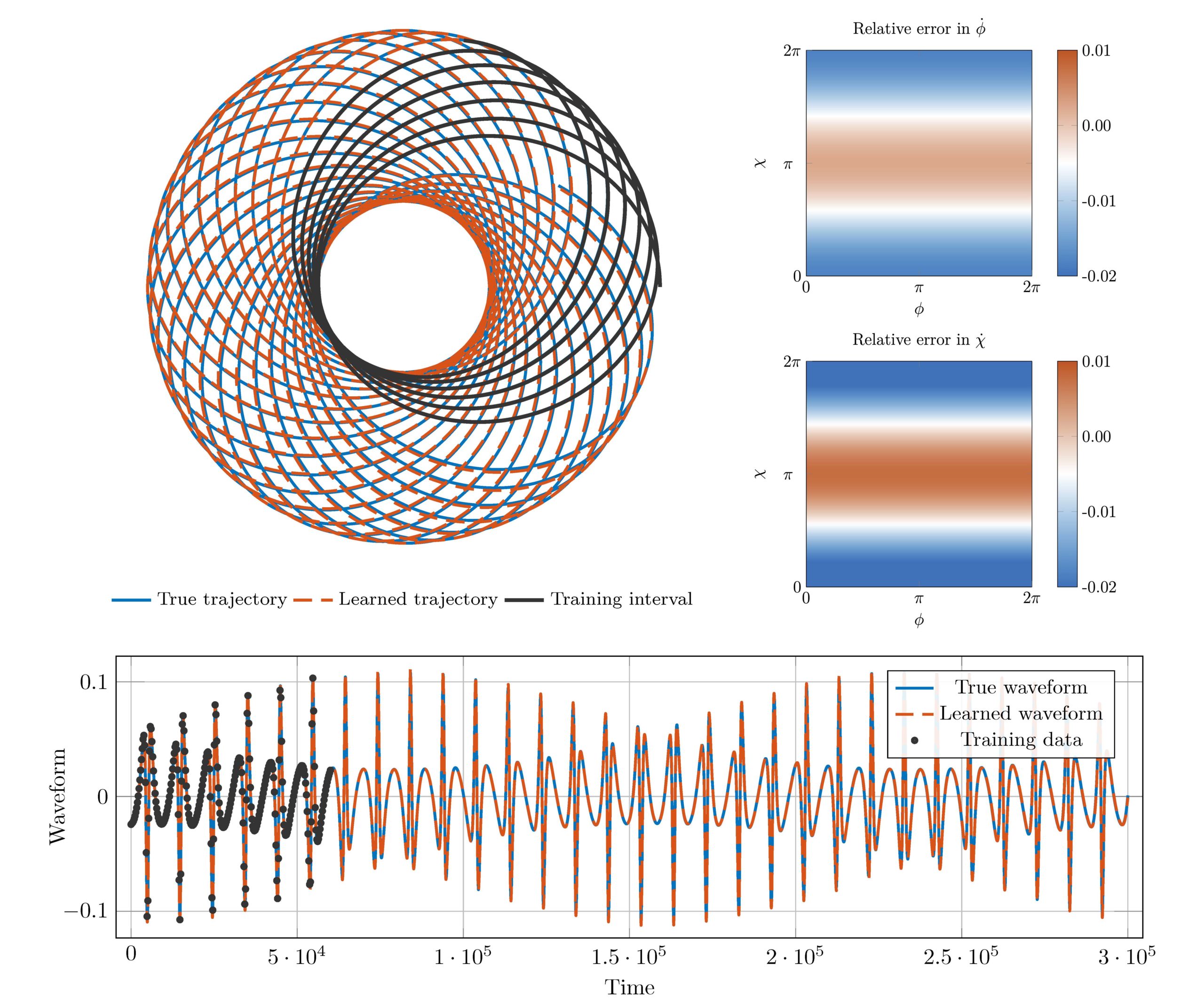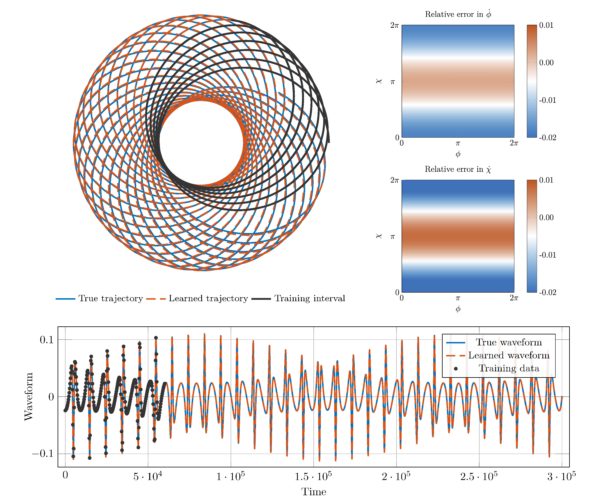
Orbital dynamics of binary black hole systems can be learned from gravitational wave measurements
ICERM - March 2021

The collision of massive compact objects, such as black holes (BHs) or neutron stars, emit an immense amount of energy in the form of gravitational waves. With the advent of advanced gravitational-wave detectors, such as the NSF-funded Laser Interferometer Gravitational-Wave Observatory (LIGO), we are now able to directly observe gravitational waves. Encoded in these waves are information about black holes, populations of black holes, and the equations describing gravitational phenomena. Traditional approaches to model gravitational waves and BH dynamics are often obtained by solving simplified forms of the Einstein field equation (a nonlinear, coupled, hyperbolic-elliptic partial differential equations). For example, the Einstein equation may be simplified into a coupled system of ordinary differential equations that in turn describe the BH dynamical motion, which is then used to calculate the emitted gravitational waves.

For the first time, we develop an inverse approach to this problem. We learn the dynamical models for the merging BHs using gravitational wave data and powerful machine learning algorithms. We show that starting with just basic Newtonian physics and universal differential equations parameterized by neural networks, we can learn the missing relativistic physics needed to describe black hole dynamics. We apply our method to various BBH systems including extreme and comparable mass ratio systems in eccentric and non-eccentric orbits. We show that the resulting differential equations apply to time durations longer than the training interval, and relativistic effects, such as perihelion precession, radiation reaction, and orbital plunge, are automatically accounted for. The methods outlined here provide a new, data-driven approach to studying the dynamics of binary black hole systems. Our current approach may also be extended to work directly with LIGO datasets in order to discover the orbital equations of experimentally detected objects.
Researchers: Brendan Keith (Lawrence Livermore National Laboratory), Akshay Khadse (University of Mississippi), Scott Field (University of Massachusetts, Dartmouth)
Publication:
Learning orbital dynamics of binary black hole systems from gravitational wave measurements
Brendan Keith, Akshay Khadse, and Scott E. Field
Researchers: Brendan Keith (Lawrence Livermore National Laboratory), Akshay Khadse (University of Mississippi), Scott Field (University of Massachusetts, Dartmouth)
Publication:
Learning orbital dynamics of binary black hole systems from gravitational wave measurements
Brendan Keith, Akshay Khadse, and Scott E. Field
Phys. Rev. Research 3, 043101
See More At:
See More At:
https://phys.org/news/2021-11-machine-derive-black-hole-motion.html
Computational code: https://zenodo.org/record/4477649
Computational code: https://zenodo.org/record/4477649